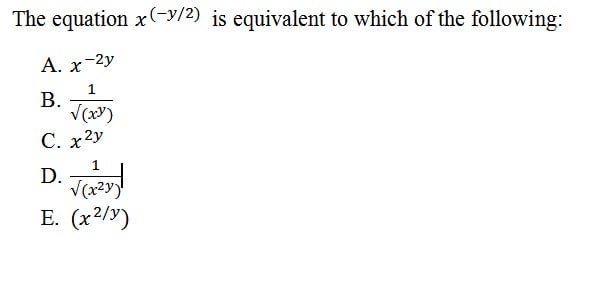Here’s how you can (still) game the new SAT
What does the A stand for in SAT?


What does the A stand for in SAT?
A) Aptitude
B) Assessment
C) Achievement
D) Annoying
E) None of the above
The correct answer is E. The acronym for the dreaded college-entrance exam was once short for Scholastic Aptitude Test, but it doesn’t measure aptitude. So College Board tried out “assessment” before finally letting the acronym stand for nothing at all.
The change makes sense. When I took training to teach the SAT, the instructor asked, “What does the SAT measure?” His answer: A student’s ability to do well on the SAT. Critics say the test doesn’t measure a student’s ability to succeed at university any better than high school grades and courses.
And so the College Board has turned to the drawing board yet again. Earlier this month, it announced a revision to the much-maligned exam, eliminating words as esoteric as “recondite” and making an expanded and revised essay optional. College Board also will offer online test preparation through a new partner, Khan Academy, which provides educational videos for free online.
College Board purports the revisions will help those left behind by the college-entrance exam. But the organization has never been forthright. So we shouldn’t believe the board in its latest attempt at self-preservation, as it seeks to retake the lead in college-preparation examinations, a position it lost to the ACT in 2012.
Let’s look at the veracity of College Board’s statements. On the back cover of its Official SAT Study Guide, College Board claims the SAT covers the same subjects taught in high school.
No matter how importunately College Board promotes these falsehoods, anyone knows that students don’t learn the word “importunate” in high school, even though College Board included the word on a recent exam—120 years after its most recent appearance in a New York Times headline. The organization deserves kudos for plans to revise the test to include words used in high school. But the revision reveals the long-standing lie. Confessions are admirable, though less so when they’re forced, and they always erode trust.
The book also says the test isn’t designed to trick students. “Myth: Tips and shortcuts can help you ace the SAT,” the book claims. Anyone smart enough to graduate high school isn’t dumb enough to buy that bunk. Tricks are not only important but essential to achieving a top score on the SAT (see a few tips below). Tricks will continue to work on the revised exam, as the multiple-choice format is inherently vulnerable to strategies.
While the full details of the new format haven’t been released, the multiple-choice format can be exploited on all current multiple-choice questions. On sentence completion—filling in a missing word in a sentence—tips can help test-takers boost their scores without learning one new SAT word. Several tricks can help students correctly answer math questions without understanding the underlying mathematical concepts.
Even the writing section can be outsmarted. The exam tests for diction: whether, for example, to use “imminent” or “eminent.” Though College Board’s $24.99 guide, designed for self-study, includes not one test with an example of a diction error, an excellent tutor would alert test-takers to be on the lookout for diction errors among questions 26 to 29 of the 35-question writing section.
Because College Board wants scores to form the standard bell curve and promotes the falsehood that its test covers school subjects and isn’t subject to tricks, it will likely discourage any partners from disclosing such tips and tricks. After all, such methods wouldn’t work on a revised test, according to College Board. Already, its new partner, Khan Academy, has removed a page that has long offered video solutions to math questions from the Official SAT Study Guide. (The videos still appear on YouTube. Khan Academy didn’t respond to a query for comment.)
As the revised test will maintain a multiple-choice format for most questions, College Board cannot outwit the test-preparation industry. One vulnerable area could be the revision touted by College Board President David Coleman: evidence-based reading. Question 9, for example, might ask about the author’s attitude toward recycling, and question 10 might ask what quote from the passage provides the best evidence of that attitude. I would advise students to go through the quotes listed in question 10 to see which one best shows the author’s attitude toward recycling, a technique that should help the student answer both questions at once.
All of us in the test-preparation industry will be eagerly working to help our students excel under the new format. As owner of a test-preparation company, Your Score Booster, I’ve been eager to see experimental sections on the current exam that would reveal the types of questions that will appear on the new exam, so I took the SAT in January. Unfortunately, College Board canceled my scores and permanently banned me from taking the exam. The reason cited: handing out brochures from my company after the exam. But the head of testing integrity told me I should ask my lawyer to uncover what College Board rule that violated. Until this dispute is resolved, I’ll instead examine the material College Board released, and I’ll send an employee to examine the new test format. We’ll sift through the material. And if I win my battle against College Board, I look forward to sitting through the exam once again, without using tips and tricks, of course. They don’t work—or so we’ve been told.
Bonus: SAT tips
Sentence Completion – The Topic Trick
Though health officials applied measures to______________ the extent of the virus, the disease spread months later.
- Cure
- Mitigate
- Heal
- Treat
- Eliminate
The correct answer is rarely related to the topic of the sentence. Above, for example, the topic of the sentence is “disease.” So avoid words relating to “disease.” The answer is “mitigate.”
Math – The Pick Your Numbers Trick

You’re at the test but don’t understand negative exponents… No problem. Pick real numbers for x and y, say 2 and 3. Use those numbers to enter this equation into a calculator: 2(-3/2). Match that result to the results from answer choices, also using 2 and 3 for x and y. Eliminate answers that differ from the original result. Try various numbers for x and y until four choices are eliminated.